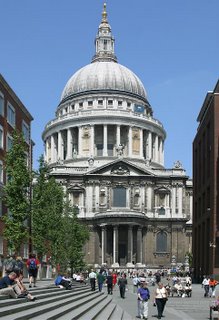 Eloquent Stones
Eloquent StonesIn 1924, Frank Boreham wrote an editorial entitled ‘Crumbling stones’, in which he considered the stones that were part of an architect’s design in an old building.[1] In this article, Boreham expressed his anxiety about old buildings that were crumbling and stimulated support for their preservation as they represented “stones [that] seem alive with the eloquence of tradition”.
Asserting their value as means by which history is preserved and presented, Boreham said, “The monuments of architecture are often the only record of the life and hopes of nations that have had their day and have ceased to be”.[2] These views about the moral power of architecture upon people are reminiscent of assertions made by John Ruskin who regarded architecture as “a vital index of a nation’s values” and “a means of enriching the nation’s values”.[3]
Impressing the Mind
In another editorial nearly two decades later, Boreham made a further claim for historic buildings to be prized. He averred: “The mind of man is more impressed by architectural than by natural grandeur ... [and] the reverence that we feel for our stateliest buildings can be attributed to our inveterate but curious habit of associating events with the places at which they happened. We transfer our esteem for a certain person to the spot that he habitually frequented or to the house in which he lived”.[4]
Value of the Cathedral
Of special note are the many articles Boreham wrote about St Paul’s Cathedral in London, its architect Sir Christopher Wren and its history. In 1925, Boreham boldly called Australian readers to give funds to “save the cathedral” believing “it is part of the priceless heritage of every British citizen” (he viewed a resident in Tasmania as “both a Tasmanian and a Briton”) and that this was the business of the whole Empire.[5] The cathedral in relation to Britain’s history, he argued, “is not only a part, and an important part; it is in itself an impressive and monumental expression and presentment. It is an epic of empire in noblest architecture”.[6]
Geoff Pound
Image: St Paul's "an epic of empire..."
[1] Boreham, Mercury, 19 January 1924.
[2] Boreham, Mercury, 19 January 1924.
[3] John Ruskin, The genius of John Ruskin: Selections from his writings ed. John D Rosenberg (George Allen & Unwin Ltd, 1963), 121-122.
[4] Boreham, Mercury, 22 March 1941; Age, 30 August 1947.
[5] Boreham, Mercury, 24 January 1925.
[6] Boreham, Mercury, 24 January 1925.


